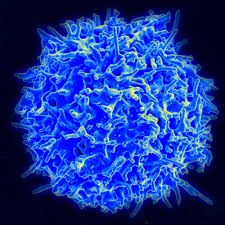Cytokine release syndrome, a side effect of an immunotherapy used to treat leukemia and lymphoma, appears to be caused by the way the intervention kills the tumor cells, according to a mouse study reported Friday (January 17) in Science Immunology. Chimeric antigen receptor (CAR) T cells, engineered to track down and destroy cancer cells, induce pyroptosis, a messy form of cell death that causes the cells to explode, the researchers found. This eventually unleashes a rush of cytokines to be released from immune cells called macrophages—a process known to cause low blood pressure, fever, nausea, and breathing problems in patients.
There may be a way to avoid an overload of cytokines, the authors found. Interfering in the downstream effects of pyroptosis, either by blocking certain molecules or destroying macrophages, stopped cytokine release syndrome from occurring in mice.
“The experiments need to be confirmed by other labs,” Veit Hornung of the University of Munich who was not involved in the study tells STAT. If they too observe pyroptosis, “there might be ways to make them die less violently, and avoid cytokine release syndrome.”
To figure out exactly how cytokine release syndrome comes about—and thereby identify ways to mitigate the side effect—researchers watched B cell acute lymphoblastic leukemia cells respond to CAR T cells under the microscope. “The cells swell and you may observe bubbles” bursting from them as they die, says coauthor Bo Huang, an immunologist at the Chinese Academy of Medical Science, to STAT.
As the cells expanded, they produced gasdermin E, which causes them to explode during pyroptosis—and it was the CAR T cells that activated the process. It appeared that CAR T cells released a protein called perforin, which pokes holes in the tumor cells’ membrane, allowing another factor, granzyme B, to enter the targets and then activate gasdermin E.
Once the cell contents erupted, macrophages picked up on the signal and produced their own pyroptosis-related factor called gasdermin D and subsequently released cytokines.
In mice treated with CAR T cells, knocking out gasdermin E, destroying macrophages, or blocking an enzyme that activates gasdermin D prevented cytokine release syndrome.
“It’s a great step forward,” Theodore Giavridis, an immunologist and cellular engineer at immunotherapy biotech ArsenalBio who was not involved in the work, tells Science News.







